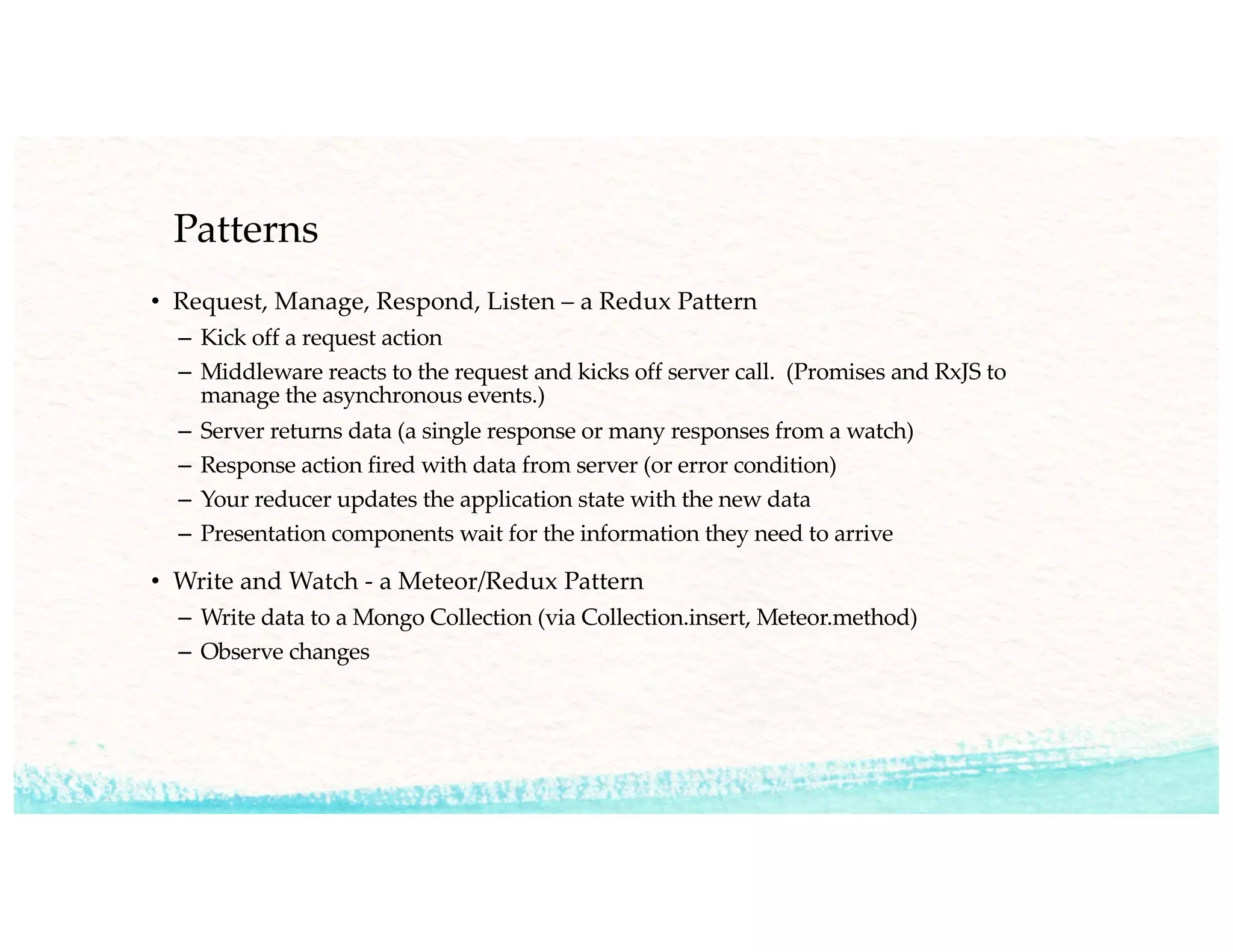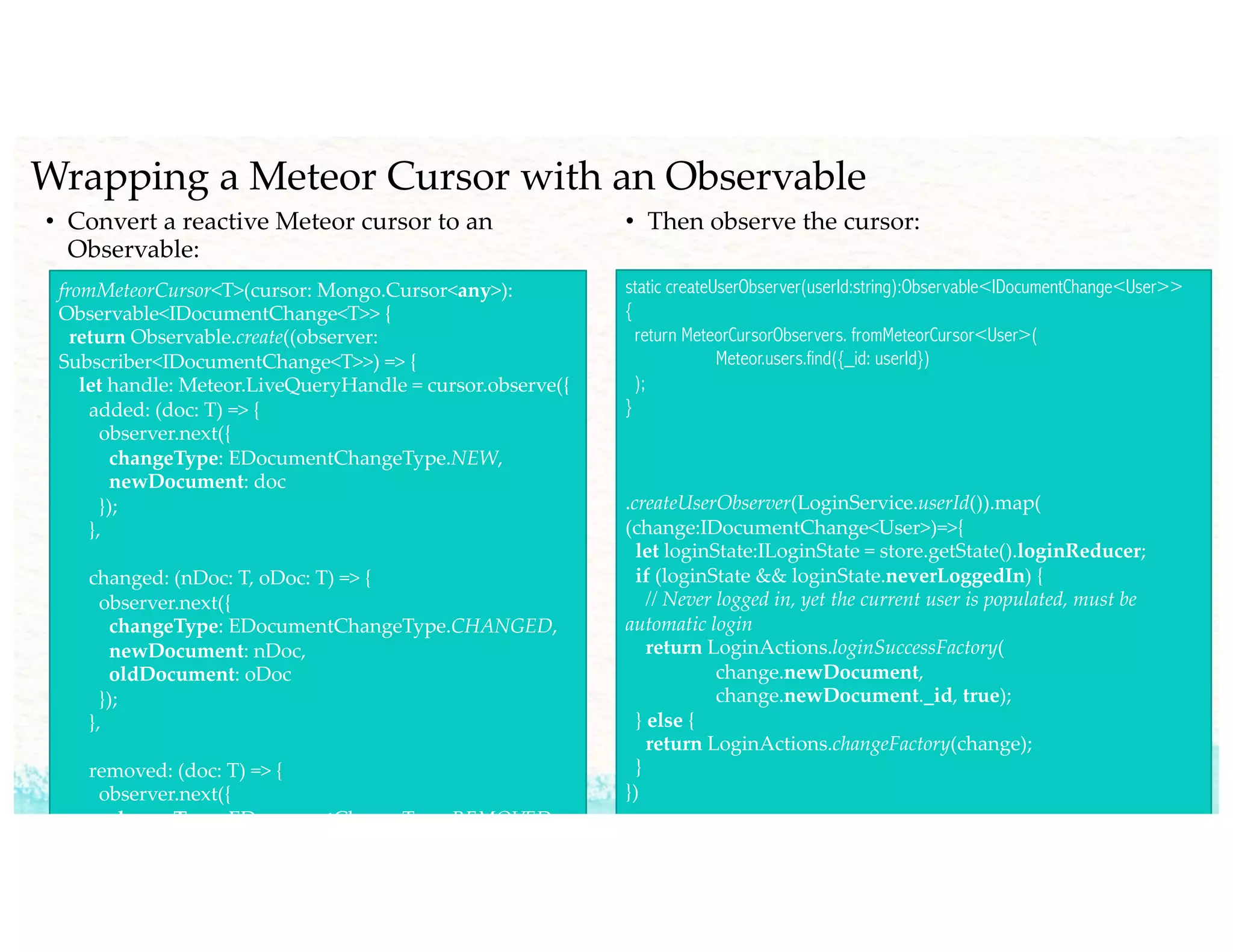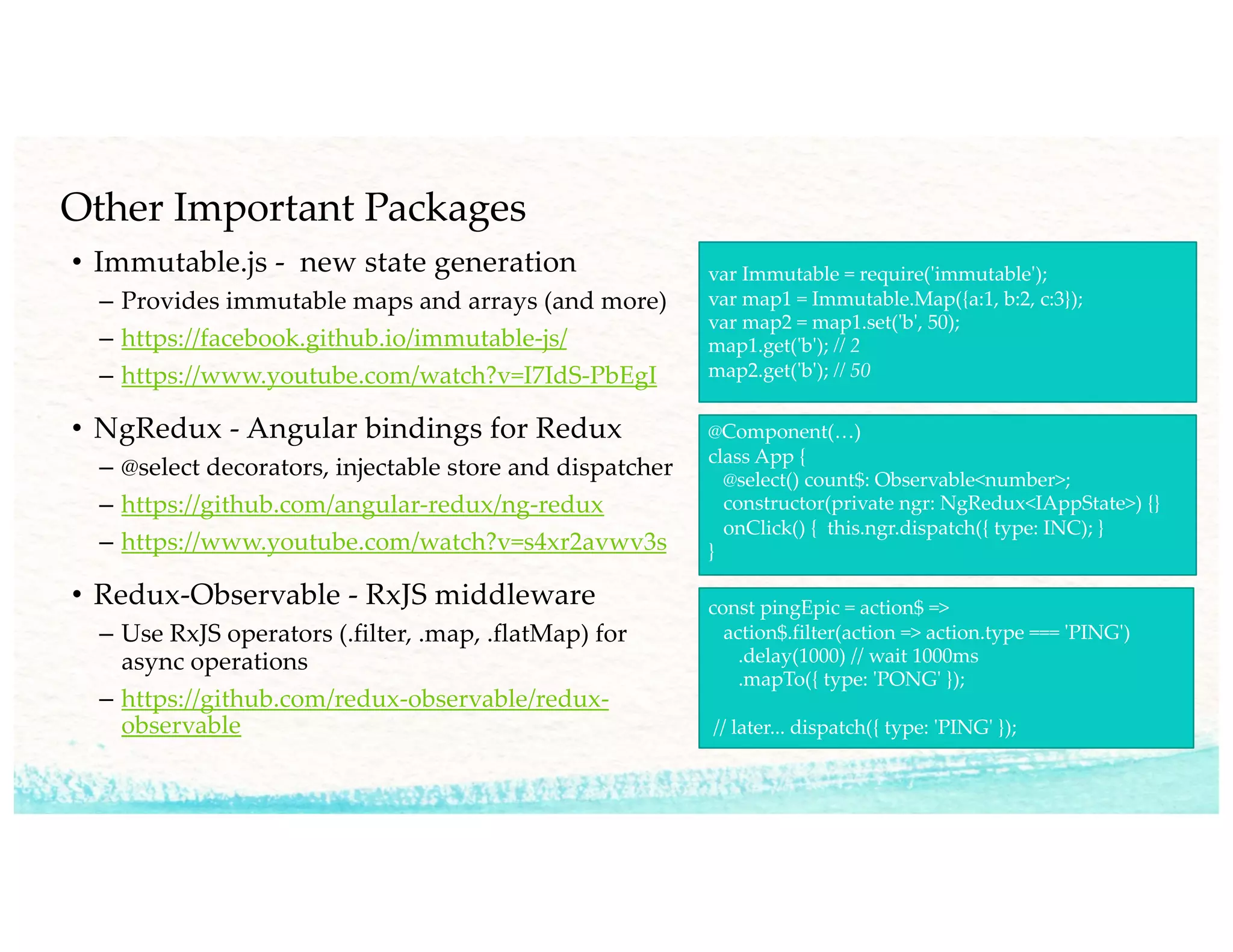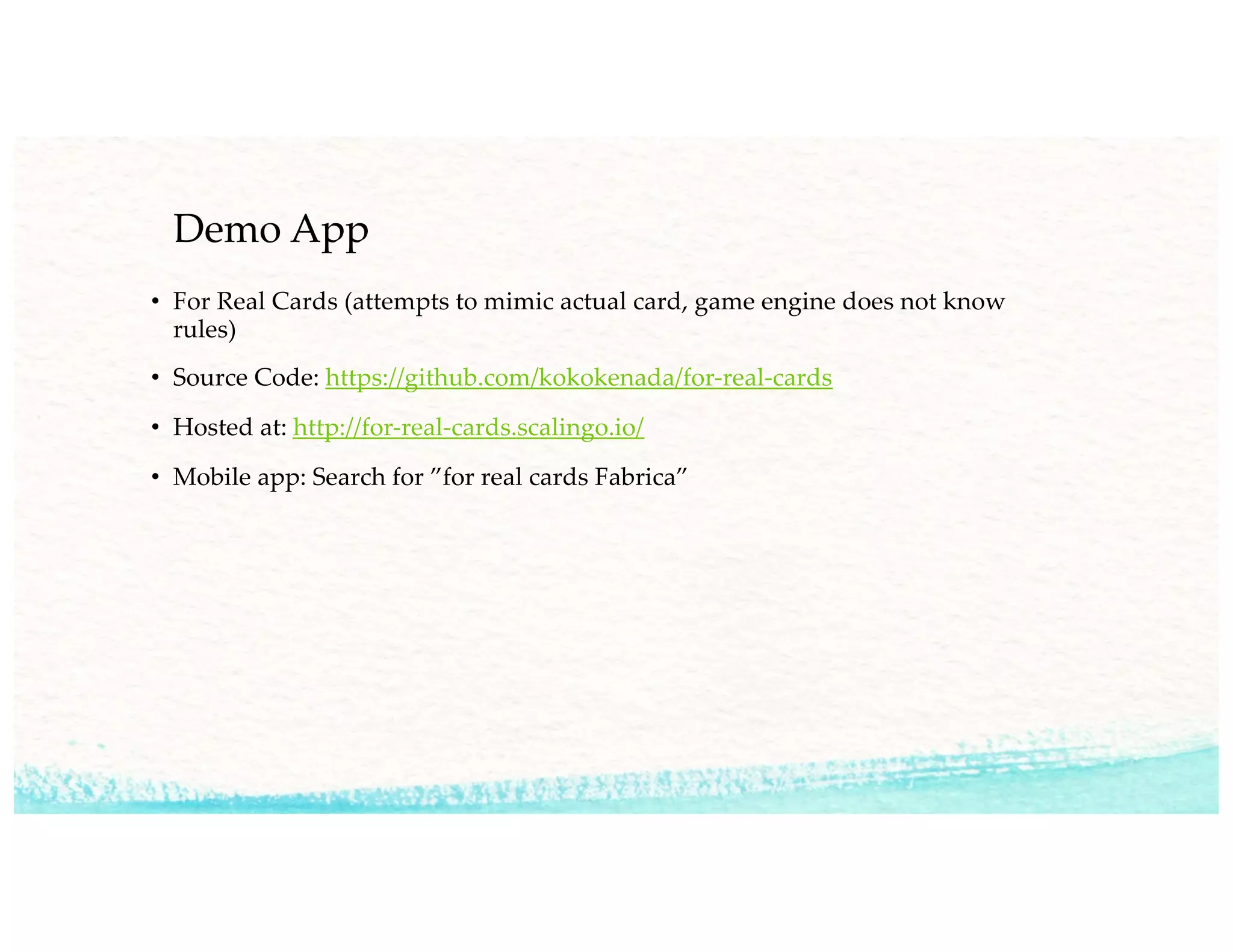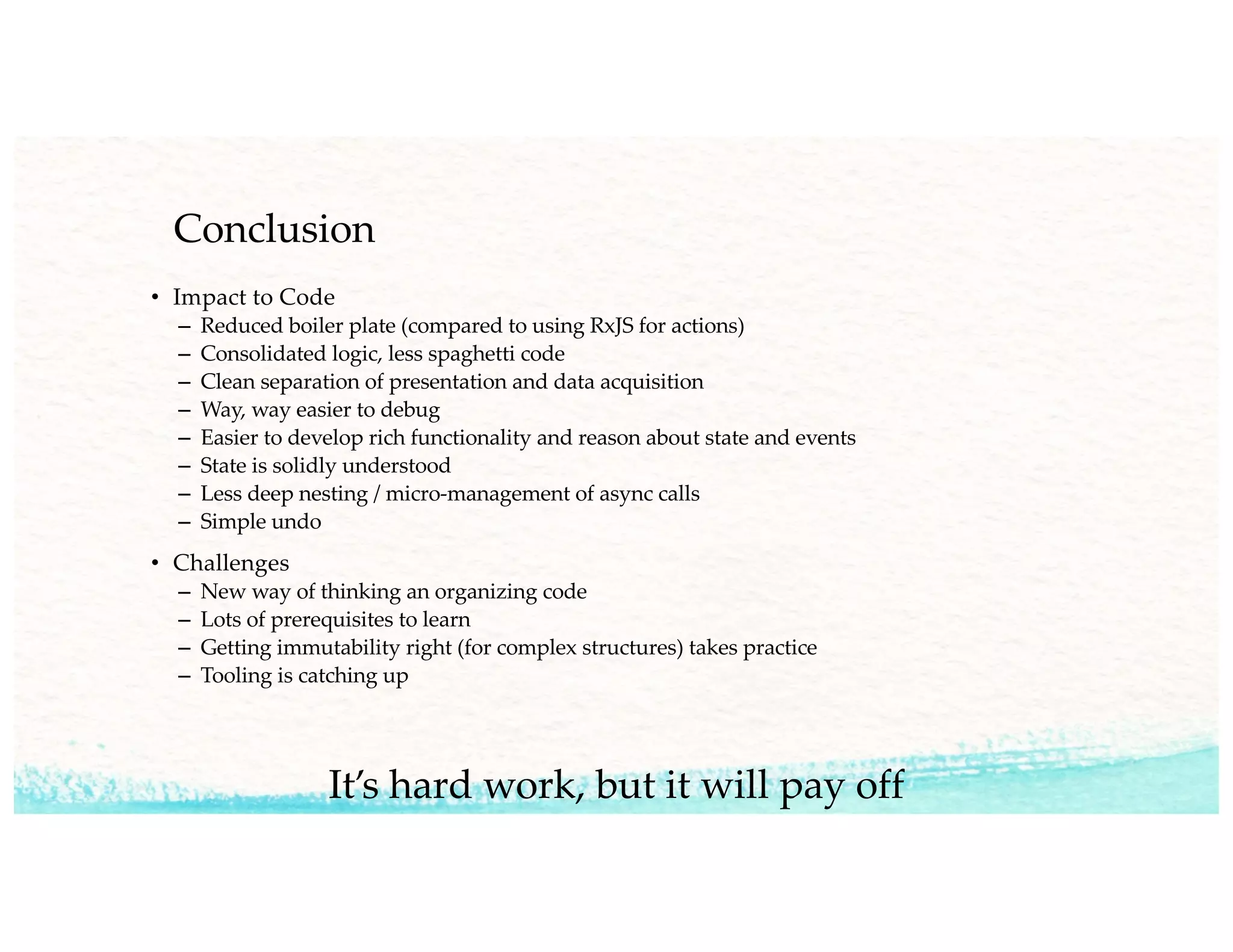The document presents a seminar on using Redux and Angular 2 with Meteor, led by Ken Ono, detailing both the agenda and key technologies involved. It covers essential prerequisites like ES6, TypeScript, and RxJS, and provides insights into Angular 2 features and Redux's structure for managing application state. The document also addresses important patterns and packages to enhance development efficiency and concludes with the benefits and challenges of adopting this approach.




![ES6
– http://es6-features.org/
– Lambda / Arrow Function
Syntax
• function(x){} same as (x)=>{}
• ()=>{1} same as ()=>{return 1}
• a=>{a*2};
– Classes (prototypical
inheritance)
– `` strings
– let / const (new scoping rules)
– Extended Parameters
• Defaults: (x, b=1)=>{}
• Rest: (x,y, …a )=>{} (a is an array of
remaining params)
• Spread: [1, …[2,3]] same as [1,2,3]
– Property Short Hand:
• {x} same as {x:x}
– Iterators & Generators
– Import/export Modules](https://image.slidesharecdn.com/usingreduxandangular2withmeteor-160922154952/75/Using-redux-and-angular-2-with-meteor-5-2048.jpg)

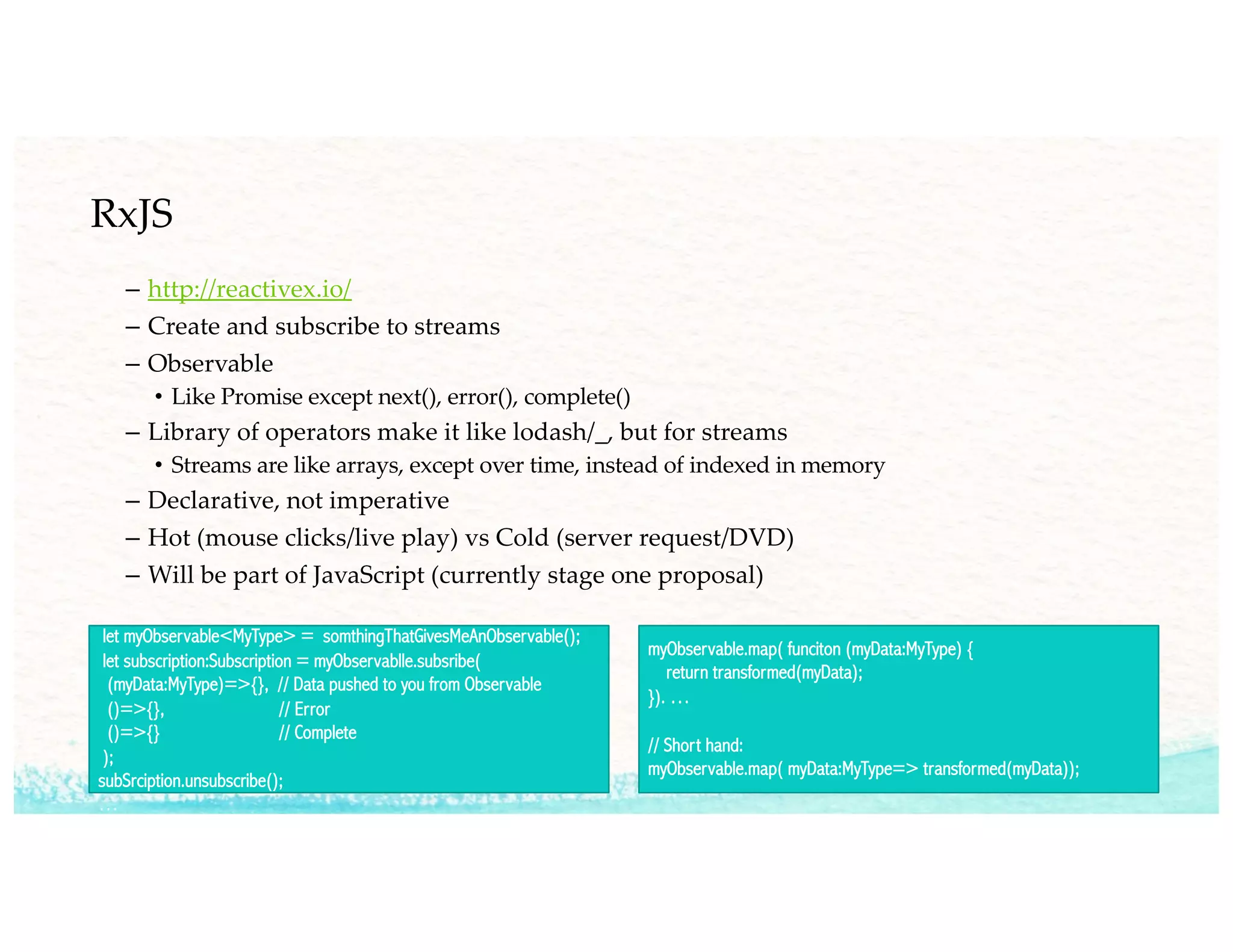
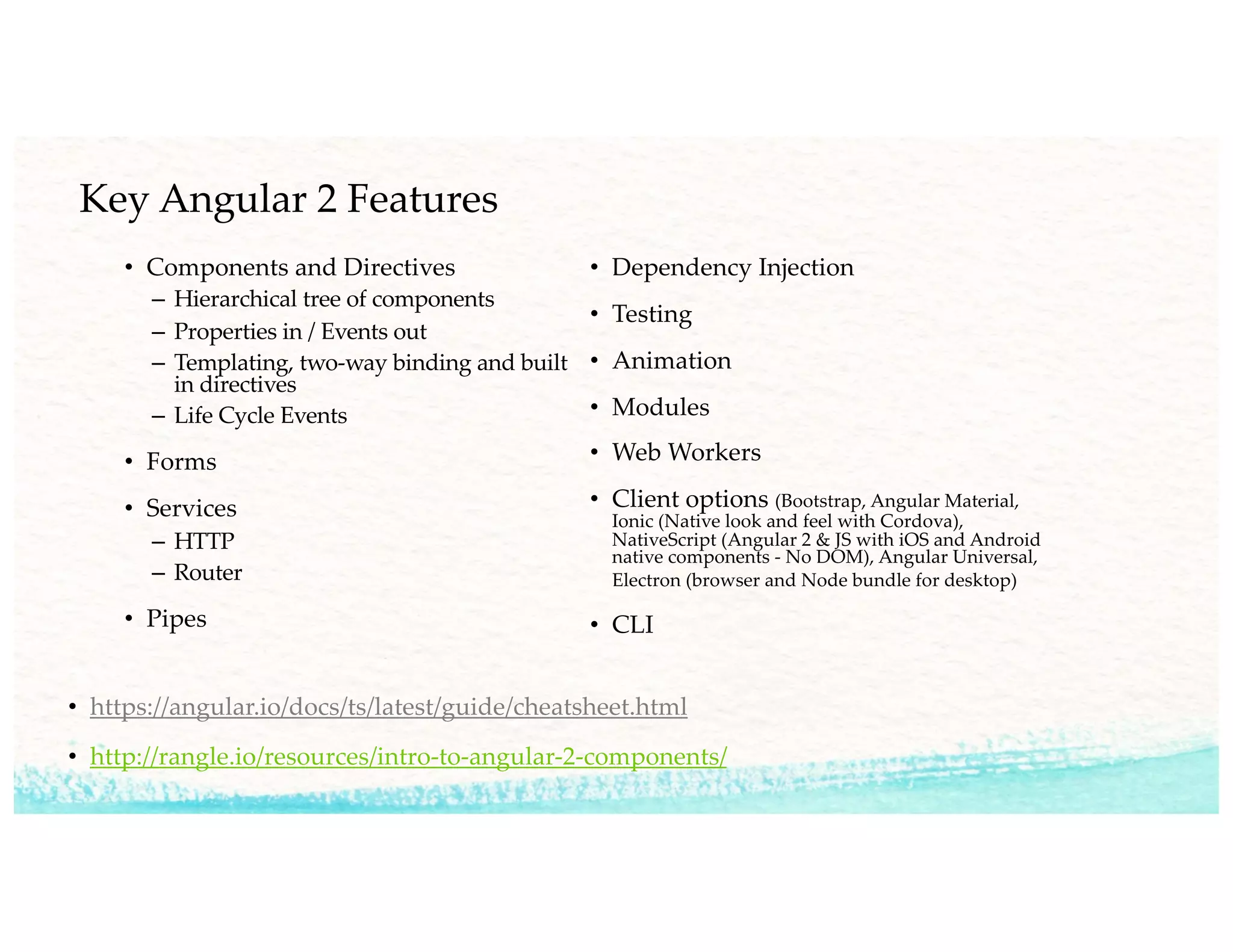
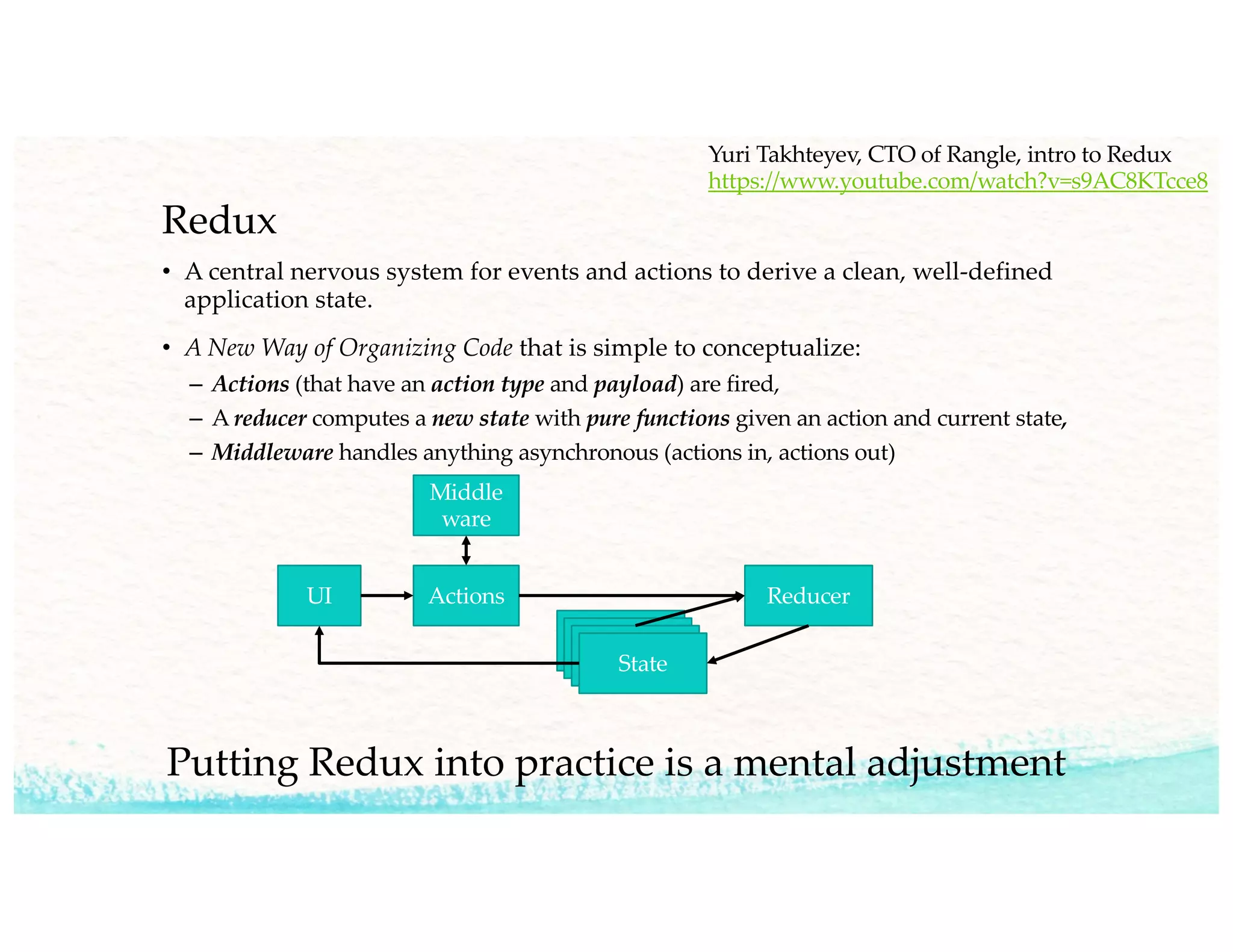
![Redux Module
• My approach to organizing Redux pieces
• Define a reducer, set of actions and async
handlers as a bundle
• Let’s look at a few modules that map to Meteor
features
– Organizing Actions
– Updating State
– Async and connecting to Meteor services
– Connecting to Angular Components
export abstract class ReduxModule<T> {
reducer:Reducer<T>;
epics:Epic[]=[]; // Stream based middleware
middlewares:any[]=[]; // Normal redux middleware
enhancers:any[]=[];
actions:Object;
abstract initialize():void;
}
…](https://image.slidesharecdn.com/usingreduxandangular2withmeteor-160922154952/75/Using-redux-and-angular-2-with-meteor-10-2048.jpg)
